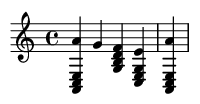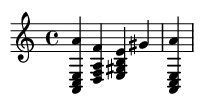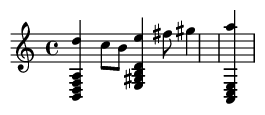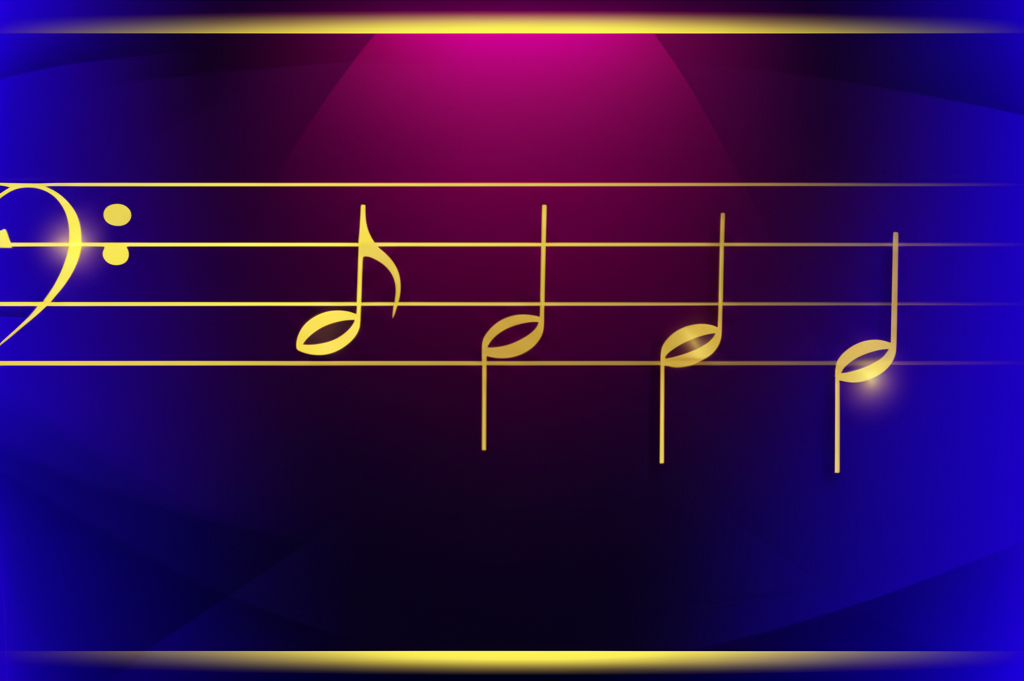Summary:
Minor scales are fundamental to Western music, providing tonal colors that evoke melancholy, mystery, or drama. This article explores the three main types of minor scales: natural, harmonic, and melodic, analyzing their structures, sonic characteristics, and practical applications. Understanding these scales is essential for composers and performers seeking to expand their musical vocabulary and master the expression of deeper, more complex emotions.
Keywords:
minor scales, natural minor, harmonic minor, melodic minor, music theory, key signatures, scales and modes, musical expression, tonality, relative minor
Introduction: What Gives Minor Keys Their Power?
From the solemn grandeur of a Bach fugue to the heartfelt angst of a modern rock ballad, minor scales have captivated listeners for centuries. While major scales often convey brightness and joy, minor scales unlock a rich palette of darker, more complex emotions: think introspection, drama, tension, and profound sorrow. They are the sound of storytelling, the shadow that gives light its meaning.
But "minor" isn't a single sound. Over centuries of musical evolution, composers and theorists developed three distinct variants to solve specific musical challenges: the natural minor, the harmonic minor, and the melodic minor. Each version has its own unique structure, character, and purpose, offering a range of tonal colors that dramatically enrich music.
In this guide, we will journey through each type of minor scale. We'll examine its structure, listen to its unique sound, and discover how it's used in classical, jazz, and popular music. Whether you want to compose more expressive music, improvise with greater depth, or simply understand the music you love on a deeper level, mastering the minor scales is an essential step.
The Natural Minor Scale: The Pure and Ancient Sound
The natural minor scale, also known as the Aeolian mode, is the most basic form of the minor scale. Its pattern is directly related to the major scale. Every major scale has a relative minor that starts on its sixth degree and uses the exact same notes. For example, A natural minor is the relative minor of C major, sharing the same key signature (no sharps or flats).
Structure
The natural minor scale is built with this pattern of whole (W) and half (H) steps:
W - H - W - W - H - W - W
Compared to a major scale, it has a flattened 3rd, 6th, and 7th degree: 1 - 2 - b3 - 4 - 5 - b6 - b7
For example, the A natural minor scale contains the notes:
A - B - C - D - E - F - G - A

Sonic Characteristics and Limitations
The natural minor has a pure, melancholic, and somewhat "modal" or folk-like sound. The b7 gives it a less conclusive feeling than a major scale. This creates an important harmonic limitation: the chord built on the fifth degree (the dominant) is minor (e.g., E minor in the key of A minor). A minor dominant chord lacks the strong pull towards the tonic that a major dominant provides. In tonal harmony, this resolution (V-i) is crucial for creating a sense of finality. This "problem" led directly to the development of the harmonic minor scale.
Applications
The natural minor is perfect for creating a somber or ancient feel. It's found everywhere in:
- Folk music (e.g., "Greensleeves")
- Pop and Rock anthems (e.g., the verse of "Losing My Religion" by R.E.M.)
- Modal jazz and film scores where a floating, less forceful sound is desired.
The Harmonic Minor Scale: Adding Tension and Drama
The harmonic minor scale was developed to solve the natural minor's "weak dominant" problem. By raising the 7th degree by a half step, a powerful leading tone is created, which is only a half step below the tonic and pulls strongly towards it.
Structure
The harmonic minor simply raises the 7th note of the natural minor. Its interval pattern is:
W - H - W - W - H - W+H - H (W+H = augmented second)
Scale degrees: 1 - 2 - b3 - 4 - 5 - b6 - 7
For example, the A harmonic minor scale is:
A - B - C - D - E - F - G# - A

Sonic Characteristics
This one small change has two dramatic effects. First, it creates a major dominant (V) chord (E major in A minor), allowing for the powerful V-i cadence central to classical harmony. Second, it creates a distinctive and "exotic" sounding augmented second interval between the b6 and 7 (F to G#). This wide leap gives the scale its characteristic dramatic, tense, and often Middle Eastern or Spanish flavor.
Applications
The harmonic minor is the backbone of harmony in minor keys for centuries of music:
- Classical Music: Absolutely essential. Used in virtually all minor key pieces from the Baroque, Classical, and Romantic periods (e.g., Bach's Toccata and Fugue in D minor).
- Flamenco and Tango: Its sound is central to these styles.
- Neoclassical Metal: Guitarists like Yngwie Malmsteen use its unique sound for virtuosic effect.
- Pop/Rock: Used for dramatic flair, like in the iconic guitar solo of "Hotel California" by the Eagles.
The Melodic Minor Scale: Smooth and Sophisticated
While the harmonic minor fixed the harmonic problem, it created a melodic one: the awkward leap of an augmented second (F to G#) was considered difficult to sing and vocally jarring. The melodic minor scale was created to smooth out this leap, but in a very clever way.
Structure: The Two-Way Street
The traditional or "classical" melodic minor has different notes when ascending and descending.
- Ascending: Raise both the 6th and 7th degrees. This creates a smooth path to the tonic, removing the augmented second. (1 - 2 - b3 - 4 - 5 - 6 - 7)
- Descending: Revert to the natural minor. The need for a leading tone is gone when moving away from the tonic, so the notes return to their natural state. (b7 - b6 - 5...)
For example, the A melodic minor scale is:
Ascending: A - B - C - D - E - F# - G# - A
Descending: A - G - F - E - D - C - B - A

The Jazz Minor: A Modern Twist
In modern jazz, the ascending form of the melodic minor is so useful and versatile that it's often used both for ascending and descending lines. When used this way, it's frequently called the "Jazz Minor Scale." Its unique combination of a minor 3rd with a major 6th and 7th creates a sound that is both dark and bright, perfect for sophisticated improvisation.
Applications
The melodic minor is the scale of choice for smooth, lyrical lines.
- Classical Music: Used for vocal and instrumental melodies, especially ascending passages in composers like Mozart and Beethoven.
- Jazz: A cornerstone of modern jazz improvisation. Each mode of the "jazz minor" scale has a specific application, such as the Lydian Dominant and Altered scales.
- Film Scores: Composers like John Williams use it for heroic or soaring themes that still have a touch of gravitas.
Quick Guide: Comparing the Three Minor Scales
Let's see and hear the three scales side-by-side, starting on A. Notice how only the 6th and 7th degrees change.
- A Natural Minor: A - B - C - D - E - F - G - A
- A Harmonic Minor: A - B - C - D - E - F - G# - A (Raised 7th)
- A Melodic Minor (Ascending): A - B - C - D - E - F# - G# - A (Raised 6th & 7th)
Harmony in Practice: The "Composite Minor" Key
It's crucial to understand that composers don't rigidly stick to one minor scale throughout a piece. Instead, they fluidly borrow notes and chords from all three, creating what is often called a "composite minor" key. The choice of scale depends on the musical context—whether the goal is harmonic strength or melodic smoothness.
Here's the most important takeaway for harmony:
- The Dominant (V) Chord is almost always Major. To get a strong V-i cadence, composers borrow the raised 7th degree from the harmonic or melodic minor. So, in A minor, you will almost always see an E major chord (E-G#-B) used as the dominant, not the E minor chord from the natural minor scale.
Example 1: Natural Minor in Action
This progression (Am - G - C) has a gentle, "folky" feel because it uses the G major chord (the bVII) from the natural minor. There is no strong pull back to Am.

Example 2: Harmonic Minor's Powerful Cadence
This is the classic minor key cadence (Am - Dm - E - Am) . The melody uses the G# from the harmonic minor scale, which pulls irresistibly up to A, giving the phrase a sense of closure and finality.

Example 3: A Smooth Melodic Minor Line
Here, an ascending melody moves over a ii-V-i progression (Bm7b5 - E7 - Am) . To avoid the awkward F-G# jump, we use the melodic minor, raising both to F# and G# for a smooth, lyrical ascent to the tonic A.

Conclusion: Your Palette of Emotion
Mastering the three minor scales is like an artist learning to mix primary colors. They are not three separate, rigid rules, but a flexible system for creating a vast spectrum of musical emotion.
- The Natural Minor is your earthy, foundational color—pure and melancholic.
- The Harmonic Minor adds a splash of intense, dramatic color for creating tension and powerful resolution.
- The Melodic Minor is the tool for blending and creating smooth, sophisticated gradients of feeling.
By understanding how and why each scale exists, you can move beyond simply playing notes and begin to make conscious artistic choices. Listen for these sounds in the music you love. Experiment with them in your own playing and writing. The rich, expressive world of the minor key is now yours to explore.
